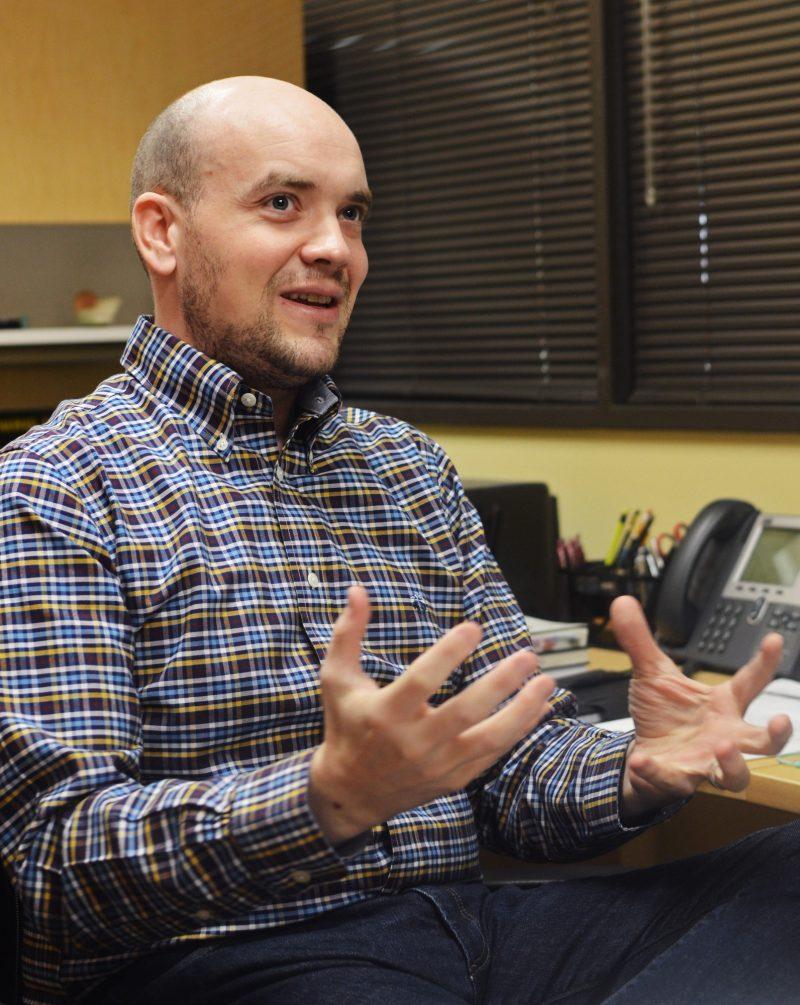Trinity University submitted the final response report regarding Trinity’s qualifications for reaffirmation as an accredited university to the Southern Association of Colleges and Schools Commission on Colleges (SACSCOC) over the summer. The report was the final opportunity in a 15-month review process for Trinity to provide evidence of compliance with the principles of accreditation, which range from faculty credentials to campus facilities.
The reaccreditation process, which occurs every 10 years, consisted of three stages: an initial report from Trinity with an off-site review in Sept. 2017, a secondary report with an on-site review during Feb. 2018 and the final report over the summer. This final report addressed six principles that the review committee who visited campus in late Feb. wanted to be further addressed.
“In December, we will find out what the status is, and in all likelihood, we will be reaffirmed,” said Kathy Friedrich, director of assessment for the department of institutional research and effectiveness. “We might have to submit an additional report — which would be called a monitoring report — to follow up again on the standards that they had questions about, but we’re not expecting them to say, ‘No, I’m sorry, you’re not accredited.’ “
If Trinity is not reaccredited, the institution would not be eligible for federal aid, and students looking to transfer would not be able to transfer credits earned at Trinity.
Meeting the principles set by SACSCOC and the federal government is only part of the reaccreditation process. Trinity must also execute a Quality Enhancement Plan (QEP).
“The idea behind the Quality Enhancement Plan is that you look at outcome measures for your institution and see if there’s an area where we can improve student outcomes and student success. It can either be a specific student outcome — like writing skills — or it can be the learning environment. But it’s generally focused on student success,” Friedrich said.
Michael Soto, associate vice president for academic affairs, explained the topic of the QEP.
“The overarching goal of the Starting Strong QEP is simple: ‘First-year students will become more aware of and engaged in practices that lead to success.’ That means we’re beefing up advising, teaching and academic support — and expanding our efforts to bring this support to students’ attention,” Soto wrote in an email interview.
This topic was chosen through the examination of data, such as that collected through the National Survey of Student Engagement.
“Their survey data showed us that upper-level students are very happy with their advising, but the students who have not yet declared a major were not as satisfied with how they were doing,” Friedrich said. “There’s also some data about how well students succeed early on in their initial courses. There are some courses, especially in the quantitative reasoning area, where they really need to be successful early on if they want to continue.”
The QEP will also encourage first-years to use academic support services.
“We have lots of resources to support students, and we want them to be aware of those resources, and so being successful in the classroom isn’t just what your instructor does — it’s also what you can do for yourself and the resources that are available to you,” Friedrich said.
With the QEP’s focus on first-years, the First-Year Experience (FYE) has been subject to some modifications.
“Two changes to the FYE are worth mentioning: First, we have a new FYE Coordinator in Professor Michael Hughes from the Library,” Soto wrote. “Second, we’ll be implementing a pilot ‘early alert’ program in the FYE course. The early alert system is modeled after the mid-semester grading program that’s already in place, but as the name suggests, it occurs earlier in the semester.”
Under the early alert system, students will be notified of their status in a class during the week of Sept. 17. If the student has less than a C-, faculty will enter an alert grade, and the student’s advisor will be notified of a risk factor — such as excessive tardiness or poor quiz grades — that is jeopardizing their advisee’s grade. Students will also be notified with an “S” if they have a satisfactory grade.
The early alert program pilot will occur this fall only for the FYE. According to Hughes, the program will expand to every course in the future.
“The goal is to get students at risk of falling behind in the class to notice their standing,” Hughes said. “One of the complaints that we get is that students don’t know how they are doing. They may not be given enough low stakes assignments from their instructors so that they have some sense of their knowledge in class, but then there are other people that can help them make an early intervention so that they can get their grade up to where it needs to be.”
Hughes will also use the FYE to contribute to the QEP’s goal of making first-year students aware of the academic resources that are available to them.
“Naturally everyone has to take the FYE, which means that the FYE coordinator is in the position to help boost the signal of [student support] services,” Hughes said. “Advertise them, communicate their value and make sure that instructors in the FYE are then talking about these things with their students whenever it makes sense to do so — whether that’s language on the syllabus — or having brief presentations at the Common Learning Experience.”
Friedrich expressed that this is an excellent time to be a first-year on campus.
“I think [first-years] should be very excited — I mean, they’re going to be excited anyway — but I’m excited for them because I think that we are being very intentional about the things that we can do for these students to get off on a really great start, and I think that’s awesome,” Friedrich said.







